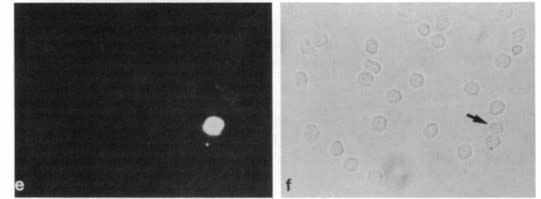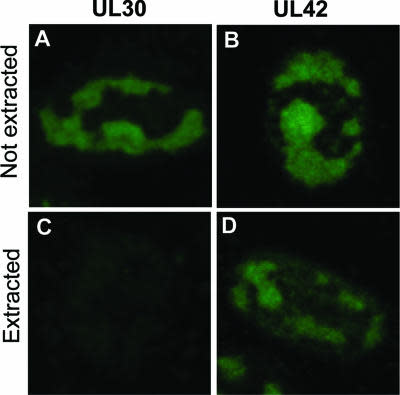
Cat. #151026
Anti-FCGR1 [10.1] mAb
Cat. #: 151026
Sub-type: Primary antibody
Unit size: 100 ug
Availability: 3-5 days
Target: Fc-gamma receptor 1 (FCGR1, CD64)
Class: Monoclonal
Application: FACS ; IHC ; IF ; IP ; Fn
Reactivity: Human
Host: Mouse
£300.00
This fee is applicable only for non-profit organisations. If you are a for-profit organisation or a researcher working on commercially-sponsored academic research, you will need to contact our licensing team for a commercial use license.
Contributor
Inventor: Nancy Hogg
Institute: Cancer Research UK, Lincoln's Inn Fields Institute
Primary Citation: Dougherty et al. 1987. Eur J Immunol. 17(10):1453-1459. PMID: 3500057.
Tool Details
*FOR RESEARCH USE ONLY
- Name: Anti-FCGR1 [10.1] mAb
- Alternate name: Fc Fragment Of IgG Receptor Ia; Fc Gamma Receptor Ia; Fc-Gamma RIA; IGFR1; FCRI; Fc Gamma Receptor; CD64 Antigen; FCGR1; CD64; FCG1
- Clone: 10.1
- Tool sub type: Primary antibody
- Class: Monoclonal
- Conjugation: Unconjugated
- Molecular weight: 71 kDa
- Strain: Balb/c
- Reactivity: Human
- Host: Mouse
- Application: FACS ; IHC ; IF ; IP ; Fn
- Description: Anti-FCGR1 10.1 specifically recognises Fc-gamma receptor 1. This mAb allows investigation of mononuclear phagocyte high affinnity receptor, FcRI properties. Anti-FCGR1 can mediate antibody dependant monocyte lysis of tumour cells (or cells expressing the antibody) using host cytotoxic mechanisms or be directed to different types of tumour cells in the form of a heteroantibody, mediating lysis. This monoclonal antibody is directed against an epitope located close to the IgG-binding site of FcRI. This clone (10.1) inhibits binding to mononuclear phagocyte of erythrocytes opsonised with rabbit IgG or human IgG3.
- Immunogen: Rheumatoid synovial fluid cells and fibronectin purified human monocytes.
- Immunogen uniprot id: P12314
- Isotype: IgG1
- Myeloma used: Sp2/0-Ag14
- Recommended controls: Myeloid cell lines U937 and HL60
Target Details
- Target: Fc-gamma receptor 1 (FCGR1, CD64)
- Molecular weight: 71 kDa
- Tissue cell line specificity: Myeloid cell lines U937 and HL60
- Target background: Was created by Nancy Hogg at the London CRUK research institute: Lincoln's Inn Fields, in order to mediate monocyte mediated antibody dependent lysis/death of cells/hybridomas expressing FCGR1 for IgG1. This means that high affinity FcR1 on monocytes can be used as a cytotoxic trigger to destroy targeted tumour cells expressing the antibody or heteroantibodies can be produced and used to target tumour cells which don't express anti-FCGR1. Research Application Many uses across a range of applications, especially immunotherapy and inflammation. Involved in both innate and adaptive immune responses, cytokine production and phagocytosis. Fc-gamma receptor 1 (CD64) is an IgG receptor expressed by monocytes and myeloid cell lines. It is a marker of inflammation. It is involved in cancer and many chronic diseases (arthritis, multiple sclerosis, diabetic ulcers), but also in antibody-dependent cell-mediated cytotoxicity (ADCC), sepsis, automimmune disorders and periodic fever, aphthous stomatitis, pharyngitis, and cervical adenitis (PFAPA) syndrome. The 10.1 antibody blocks the Ig binding to FcR1 receptor.
Applications
- Application: FACS ; IHC ; IF ; IP ; Fn
Handling
- Format: Liquid
- Concentration: 0.97 mg/ml
- Unit size: 100 ug
- Storage buffer: PBS containing 0.02% Sodium Azide.
- Storage conditions: Store undiluted 2° C to 8° C, do not freeze and protect from prolonged light exposure
- Shipping conditions: Shipping at 4° C
References
- Onuora et al. 2019. Nat Rev Rheumatol. 15(8):450. PMID: 31278378.
- Rogers et al. 2017. Cytometry B Clin Cytom. 92(4):258-265. PMID: 26566003.
- Sips et al. 2016. Mucosal Immunology. 9(6):1584-1595. PMID: 26883728.
- Tan et al. 2016. Eur J Immunol. 46(4):919-927. PMID: 26763072.
- Hanihara et al. 2016. J Neurosurg. 124(6):1-8. PMID: 26636389.
- Tutt et al. 2015. J Immunol. 195(11):5503-5516. PMID: 26512139.
- Schwab et al. 2015. Cell Rep. 13(3):610-620. PMID: 26456831.
- Sousa et al. 2015. Breast Cancer Res. 17(1):101. PMID: 26243145.
- Conrad et al. 2015. Arthritis Res Ther. 17(1):1-12. PMID: 26178906.
- Matt et al. 2015. Scand J Rheumatol. 44(6):464-473. PMID: 26084203.
- Pilling et al. 2015. PLoS One. 10(3):e0119709. PMID: 25774777.
- Sutherland et al. 2015. Curr Protoc Cytom. 72(1):6.37.1-6.37.29. PMID: 25827482.
- Mancardi et al. 2013. Blood. 121(9):1563-73. PMID: 23293080.
- Schleinitz et al. 2008. Arthritis Rheum. 58(10):3216-23. PMID: 18821690.
- Jayaram et al. 1989. Clin Exp Immunol. 75(3):414-20. PMID: 2495203.
- Dougherty et al. 1987. Eur J Immunol. 17(10):1453-1459. PMID: 3500057.





